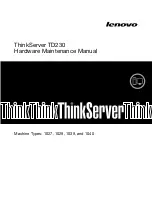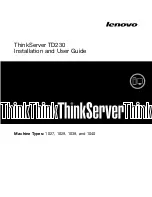
NetGear Print Server Manual
Appendix B Understanding IP Addresses
This appendix provides information about understanding IP addresses, which you must
assign to the NETGEAR PS100 series Print Sever when operating in
a TCP/IP environment.
IP Addresses and the Internet
Because TCP/IP networks are interconnected widely across the world, every machine on the Internet
must have a unique address to make sure that transmitted data reaches the correct destination. Blocks
of addresses are assigned to organizations by the Internet Assigned Numbers Authority (IANA).
Individual users and small organizations may obtain their addresses either from the IANA or from an
Internet service provider (ISP).
The Internet Protocol (IP) uses a 32-bit address structure. The address is usually written in dot notation
(also called dotted-decimal notation), in which each group of eight bits is written in decimal form,
separated by decimal points. For example, the binary address:
11000011 00100010 00001100 00000111
is normally written as:
195.34.12.7
which is easier to remember and easier to enter into your computer.
In addition, the 32 bits of the address are subdivided into two parts. The first part of the address
identifies the network, and the second part identifies the host node or station on the network.
The dividing point may vary depending on the address range and the application.
There are five standard classes of IP addresses. These address classes have different ways of
determining the network and host sections of the address, allowing for different numbers of hosts on a
network. Each address type begins with a unique bit pattern, which is used by the TCP/IP software to
identify the address class. After the address class has been determined, the software can correctly
identify the host section of the address. The three main address classes are illustrated below, which
shows the network and host sections of the address for each address type.
Three Main Address Classes
Class A addresses can have up to 16,777,214 hosts on a single network. They use an 8-bit network
number and a 24-bit node number. Class A addresses are in this range:
1.x.x.x to 126.x.x.x.
83
Содержание PS111W - Print Server - Parallel
Страница 36: ...NetGear Print Server Manual The next screen shows you the progress of the installation Figure 4 6 27 ...
Страница 38: ...NetGear Print Server Manual You can open and access the group from your desktop as well See Figure 4 9 29 ...
Страница 44: ...NetGear Print Server Manual Figure 4 13 Set up TCP IP for Print Server to get an IP address 35 ...
Страница 46: ...NetGear Print Server Manual Figure 4 14 Wireless Configuration 37 ...















































